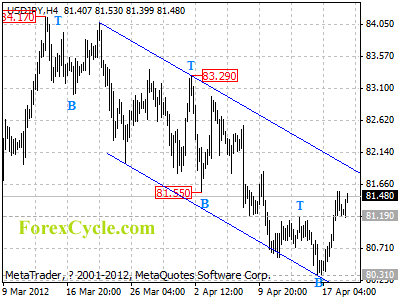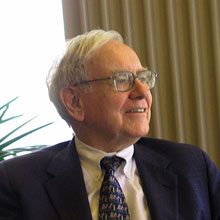Article by Investment U

One solution for income investors who’d prefer to hang on to their money rather than paying the government is master limited partnerships (MLPs).
“Let me tell you how it will be
There’s one for you, nineteen for me
Cause I’m the taxman, yeah, I’m the taxman.”
– The Beatles
Like many Americans, I spent this past weekend going over my tax information so I could put it in the mail yesterday – at the last possible minute. I’ve said before, I actually don’t hate paying taxes. I like the fact that my kids go to a decent school, that the military protects us. and if I have to call 911, somebody shows up to help within minutes.
As Oliver Wendell Holmes Jr. said, “Taxes are the price we pay for civilization.”
Of course, there’s plenty of waste as well, but that’s a topic for another column.
Just because I understand that taxes are necessary to help our society function, that doesn’t mean that I want to pay one penny more than I’m legally obligated.
Fortunately for income investors, the tax rate on dividends is at a low 15%. Although that could change next year if the Bush tax cuts are allowed to expire.
But even a low tax rate is tough to take in this extremely low interest rate environment. On a two-year CD rate, you’re lucky to get 1%. Take taxes out and your money is barely growing at all.
So it’s not surprising that investors need a way to earn more income and avoid paying taxes on that income at the same time.
But muni bonds won’t do the trick. A quality 10-year municipal bond will get you about 2% on average. That doesn’t even keep pace with inflation – whether you’re paying taxes or not.
Have No Fear, MLPs Are Here
One solution for income investors who’d prefer to hang on to their money rather than paying the government is master limited partnerships (MLPs).
About 80% of all MLPs are oil and gas companies. The rest are in diverse industries including investments and even cemeteries.
A MLP is similar to a real estate investment trust (REIT) in that at least 90% of its income is passed along to unit holders. As a result, the company doesn’t pay corporate tax.
And because it must pay out virtually all of its income to unit holders, MLPs tend to have higher yields than ordinary dividend-paying stocks. For example, the Alerian MLP Infrastructure Index ETF (NYSE: AMLP) has a yield of 6%. It tracks the index, which is comprised of 50 prominent energy-related MLPs.
But here’s where it gets interesting if you own an MLP. Due to a depreciation allowance, most of the income received by MLP unit holders is considered a return of capital, not a dividend. So the 15% (and possibly higher in the future) tax rate does not apply. A return of capital is not taxed, because it’s considered a return of investors’ own money.
Of course, Uncle Sam is going to get his money eventually. What happens is the distribution lowers your cost basis. Once you sell the stock, if you have a lower cost basis, your capital gain will be higher and you’ll pay taxes on the capital gain.
For example, you buy shares of a MLP for $20 per share. In the first year, you receive a cash distribution of $1 per share. For the sake of this example, let’s assume the entire $1 distribution is considered a return of capital. You will not pay taxes on the $1, but your cost basis now drops to $19.
In the following year, you receive another $1 per share distribution. Again, you don’t pay taxes on the $1, but your cost basis is now $18.
In year three, you sell the stock for $22. Even though you originally bought it for $20, your capital gain will be $4, because your cost basis was lowered to $18. You will pay capital gains taxes on the $4.
Keep in mind, that’s just a simplified example. MLPs have a more complex tax structure, so be sure to talk to your tax professional before investing in them.
Tax-Deferred Toll Collectors
What really I like about MLPs is that because they’re already tax deferred, I can keep them in my taxable account, rather than taking up space in my IRAs (you might actually pay a penalty if it’s in your IRA, so be sure to talk to a tax professional). Additionally, I can reinvest the distribution, which is something I do with all of my income-producing stocks, without having to pay taxes on it (or most of it).
I also like the business models of many of the energy MLPs. Very often they’re pipeline companies that aren’t impacted much by the price volatility in oil and gas. They’re simply the toll collectors, allowing the various energy companies to use their pipelines to transport oil and gas. Of course, supply and demand will impact their business, but generally speaking, the day-to-day price change won’t.
One company that I like in the space is Enterprise Products Partners (NYSE: EPD). It currently has a yield of 4.9%. Interestingly, this stock is one that I’ve recommended in Oxford Systems Trader – not because of its yield or tax-deferred status but because of its earnings and cash flow growth, as well as the efficiency of its management.
So investors have the opportunity to own the stock of an impressive company, not just a solid income vehicle.
MLPs offer investors the chance to earn a good yield that is mostly tax deferred.
While you may not be paying the 95% super tax that sparked George Harrison’s ire and caused him to write one of his first songs for the Fab 4, there’s still nothing wrong with legally hanging on to your money for as long as you can rather than giving it to the government.
After all, if someone is going to blow their money in Vegas, it might as well be you instead of the GSA.
Good Investing,
Marc Lichtenfeld

Article by Investment U




 Tradervox (Dublin) – South pacific dollars gained against most major currencies today as the International Monetary Fund gave a positive global economic growth outlook today. The report led to an increase in demand of higher yielding assets causing the strengthening of the Australian and New Zealand dollars. The Kiwi increased against the US dollar and the Japanese yen as implied volatility of Group of Seven currencies touched the weakest level in more than three years.
Tradervox (Dublin) – South pacific dollars gained against most major currencies today as the International Monetary Fund gave a positive global economic growth outlook today. The report led to an increase in demand of higher yielding assets causing the strengthening of the Australian and New Zealand dollars. The Kiwi increased against the US dollar and the Japanese yen as implied volatility of Group of Seven currencies touched the weakest level in more than three years.

 Tradervox (Dublin) – Last week saw the euro/dollar pair, close at lower level due to Spanish concerns. However, these concerns have continued to haunt the pair to this week with the pair sliding lower. The eurozone is on the spotlight again with pressure on Spain growing. The country is currently hosting EU inspectors and Italian official are putting on more pressure. Further, the market has pushed Spanish yields higher and the ECB has hinted on reigniting its bond buying scheme, but LTROs are expected. In the US things are better with chances of the third round or quantitative easing diminishing.
Tradervox (Dublin) – Last week saw the euro/dollar pair, close at lower level due to Spanish concerns. However, these concerns have continued to haunt the pair to this week with the pair sliding lower. The eurozone is on the spotlight again with pressure on Spain growing. The country is currently hosting EU inspectors and Italian official are putting on more pressure. Further, the market has pushed Spanish yields higher and the ECB has hinted on reigniting its bond buying scheme, but LTROs are expected. In the US things are better with chances of the third round or quantitative easing diminishing.